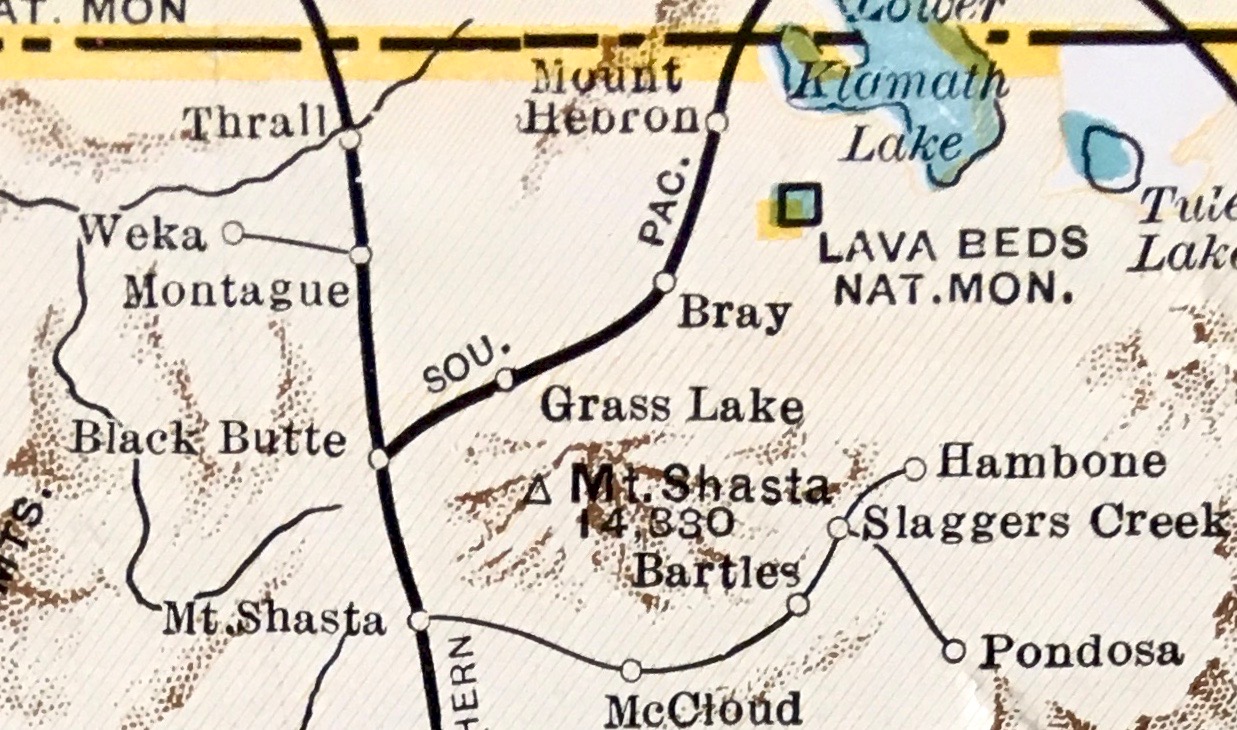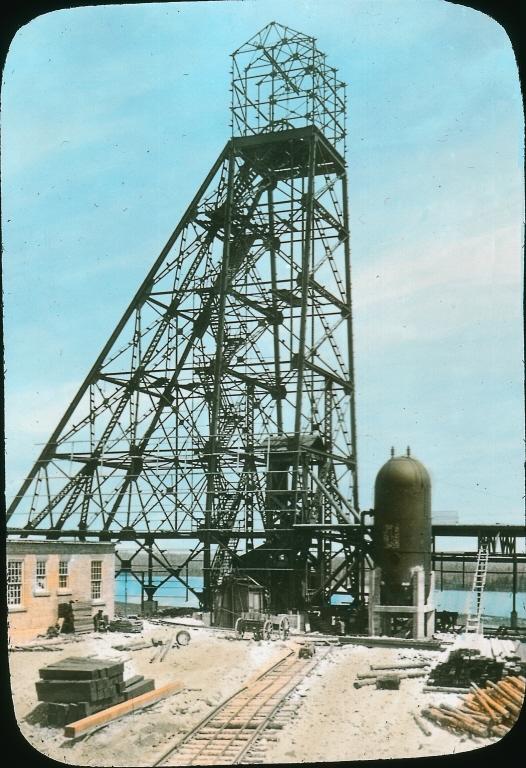|
EMD SD38
The EMD SD38 is a 6-axle diesel-electric locomotive built by General Motors Electro-Motive Division between May 1967 and October 1971. It had an EMD 645 16-cylinder engine generating , compared to the turbocharged EMD 645E3 V-16 engine that produced 3000 horsepower. Aside from the 3-axle trucks and a longer frame to accommodate them, the SD38 was identical to the GP38; the SD38 had the same frame as the SD39, SD40 and SD45. 52 were built for American railroads, one was built for a Canadian railroad, four were exported to a mining firm in Jamaica and seven were exported to a mining firm in Venezuela. The SD38 was succeeded by a Dash 2 version called the EMD SD38-2. Original Owners An M version of SD38 was built for the Brazil Federal Railways (RFFSA The Rede Ferroviária Federal, Sociedade Anônima (RFFSA, pronounced as ''Refesa'') () was the State-owned national railway company of Brazil created from ''Brazilian Federal Law #3.115'' on March 16, 1957, after several railro ... [...More Info...] [...Related Items...] OR: [Wikipedia] [Google] [Baidu] |
Bessemer And Lake Erie Railroad
The Bessemer and Lake Erie Railroad is a class II railroad that operates in northwestern Pennsylvania and northeastern Ohio. The railroad's main route runs from the Lake Erie port of Conneaut, Ohio, to the Pittsburgh suburb of Penn Hills, Pennsylvania, a distance of . The original rail ancestor of the B&LE, the Shenango and Allegheny Railroad, began operation in October 1869. Rail operations were maintained continuously by various corporate descendants on the growing system that ultimately became the BLE in 1900. In 2004 BLE came under the ownership of the Canadian National Railway (CN) as part of CN's larger purchase of holding company Great Lakes Transportation. BLE is operated by CN as their Bessemer Subdivision. As a subsidiary of CN, BLE has been largely unchanged (though repainting of BLE locomotives into CN paint with "BLE" sub-lettering began in April 2015) and still does business as BLE. BLE locomotives, especially the former Southern Pacific SD40T-3 "Tunnel Motors", h ... [...More Info...] [...Related Items...] OR: [Wikipedia] [Google] [Baidu] |
RFFSA
The Rede Ferroviária Federal, Sociedade Anônima (RFFSA, pronounced as ''Refesa'') () was the State-owned national railway company of Brazil created from ''Brazilian Federal Law #3.115'' on March 16, 1957, after several railroads were nationalized by the Brazilian government. However, the railroad did not take full effect until September 30, 1957. The RFFSA linked 42 railways together (both on documents and actual railroads), creating a regional system composed of 22 railroads. The goal of the RFFSA was to promote and advance the railroad sector of Brazil, creating a north-south-east-west rail network in all five regions of Brazil. But it failed and the RFFSA only served four of the five regions with a north-south rail network win 19 units of the federation of Brazil. By 1999, freight service of the railroad was liquidated and privatized, with the passenger service of the railroad liquidations occurring in 2007. Federal Authority According to ''Article 7 of Law #3.115'' which cr ... [...More Info...] [...Related Items...] OR: [Wikipedia] [Google] [Baidu] |
CSX Transportation
CSX Transportation , known colloquially as simply CSX, is a Class I freight railroad operating in the Eastern United States and the Canadian provinces of Ontario and Quebec. The railroad operates approximately 21,000 route miles () of track. The company operates as the leading subsidiary of CSX Corporation, a Fortune 500 company headquartered in Jacksonville, Florida. CSX Corporation (the parent of CSX Transportation) was formed in 1980 from the merger of Chessie System and Seaboard Coast Line Industries, two holding companies which controlled a number of railroads operating in the Eastern United States. Initially only a holding company itself, the subsidiaries that made up CSX Corporation were gradually merged, with this process completed in 1987. CSX Transportation formally came into existence in 1986, as the successor of Seaboard System Railroad. In 1999, CSX Transportation acquired approximately half of Conrail, in a joint purchase with competitor Norfolk Southern Rai ... [...More Info...] [...Related Items...] OR: [Wikipedia] [Google] [Baidu] |
Norfolk Southern Railway
The Norfolk Southern Railway is a Class I freight railroad in the United States formed in 1982 with the merger of Norfolk and Western Railway and Southern Railway. With headquarters in Atlanta, the company operates 19,420 route miles (31,250 km) in 22 eastern states, the District of Columbia, and has rights in Canada over the Albany to Montréal route of the Canadian Pacific Railway. NS is responsible for maintaining , with the remainder being operated under trackage rights from other parties responsible for maintenance. Intermodal containers and trailers are the most common commodity type carried by NS, which have grown as coal business has declined throughout the 21st century; coal was formerly the largest source of traffic. The railway offers the largest intermodal rail network in eastern North America. NS was also the pioneer of Roadrailer service. Norfolk Southern and its chief competitor, CSX Transportation, have a duopoly on the transcontinental freight rail li ... [...More Info...] [...Related Items...] OR: [Wikipedia] [Google] [Baidu] |
Conrail
Conrail , formally the Consolidated Rail Corporation, was the primary Class I railroad in the Northeastern United States between 1976 and 1999. The trade name Conrail is a portmanteau based on the company's legal name. It continues to do business as an asset management and network services provider in three Shared Assets Areas that were excluded from the division of its operations during its acquisition by CSX Corporation and the Norfolk Southern Railway. The federal government created Conrail to take over the potentially-profitable lines of multiple bankrupt carriers, including the Penn Central Transportation Company and Erie Lackawanna Railway. After railroad regulations were lifted by the 4R Act and the Staggers Act, Conrail began to turn a profit in the 1980s and was privatized in 1987. The two remaining Class I railroads in the East, CSX Transportation and the Norfolk Southern Railway (NS), agreed in 1997 to acquire the system and split it into two roughly-equal parts (a ... [...More Info...] [...Related Items...] OR: [Wikipedia] [Google] [Baidu] |
Penn Central
The Penn Central Transportation Company, commonly abbreviated to Penn Central, was an American Railroad classes, class I railroad that operated from 1968 to 1976. Penn Central combined three traditional corporate rivals (the Pennsylvania Railroad, Pennsylvania, New York Central Railroad, New York Central and the New York, New Haven and Hartford Railroad, New York, New Haven and Hartford railroads), all united by heavy service into the New York metropolitan area and (to a lesser extent) New England and Chicago. The new company failed barely two years after formation, the largest bankruptcy in U.S. history at the time. The Penn Central's railroad assets were nationalized into Conrail along with the other bankrupt northeastern roads; its real estate and insurance holdings successfully Reorganization, reorganized into American Premier Underwriters. History Pre-merger The Penn Central railroad system developed in response to challenges facing Northeast United States, northeaste ... [...More Info...] [...Related Items...] OR: [Wikipedia] [Google] [Baidu] |
Orinoco Mining Company
The Orinoco () is one of the longest rivers in South America at . Its drainage basin, sometimes known as the Orinoquia, covers , with 76.3 percent of it in Venezuela and the remainder in Colombia. It is the fourth largest river in the world by discharge volume of water. The Orinoco River and its tributaries are the major transportation system for eastern and interior Venezuela and the Llanos of Colombia. The environment and wildlife in the Orinoco's basin are extremely diverse. Etymology The river's name is derived from the Warao term for "a place to paddle", itself derived from the terms ''güiri'' (paddle) and ''noko'' (place) i.e. a navigable place. History The mouth of the Orinoco River at the Atlantic Ocean was documented by Christopher Columbus on 1 August 1498, during his third voyage. Its source at the Cerro Delgado–Chalbaud, in the Parima range, was not explored until 453 years later, in 1951. The source, near the Venezuelan–Brazilian border, at ab ... [...More Info...] [...Related Items...] OR: [Wikipedia] [Google] [Baidu] |
Dakota Southern Railway
The Dakota Southern Railway is a railroad that until late May 2021 ran between Kadoka, South Dakota, and Mitchell, South Dakota, and which continues to service the approximately of remaining active track of the Napa Junction–Platte Line in southern South Dakota. It connects with the BNSF Railway in Mitchell and Napa Junction respectively. History The Mitchell– Kadoka line is part of a former Chicago, Milwaukee, St. Paul and Pacific Railroad (CMStP&P) secondary built between Marquette, Iowa and Rapid City, South Dakota during the period of 1880 and 1907. The line lost profitability and was embargoed in 1980 and subsequently bought by the South Dakota Department of Transportation, which still owns the tracks. The purchase was orchestrated by Governor Bill Janklow. Dakota Southern also operated a line from Napa Junction to Platte, South Dakota, which was also constructed and owned by the Chicago, Milwakuee, St. Paul and Pacific Railroad. The operation lasted from 1985 ... [...More Info...] [...Related Items...] OR: [Wikipedia] [Google] [Baidu] |
McCloud River Railroad
The McCloud Railway was a class III railroad operated around Mount Shasta, California. It began operations on July 1, 1992, when it took over operations from the McCloud River Railroad. The MCR was Incorporation (business), incorporated on April 21, 1992. The MCR provided both freight service as well as passenger excursion trains like the ''Shasta Sunset Dinner Train''. Freight traffic consisted of outbound lumber and forest products as well as diatomaceous earth. Approximately 3,000 carloads of freight (1996 estimate) were handled annually. The MCR interchanged with the Union Pacific (formerly Southern Pacific Transportation Company, Southern Pacific) at Mount Shasta, California, and the BNSF (formerly the Burlington Northern, née Great Northern Railway (United States), Great Northern Railway) at Lookout, California. On June 27, 2005, the railroad applied with the Surface Transportation Board to abandon all MCR track beyond east of McCloud. During the railroad's last stand ... [...More Info...] [...Related Items...] OR: [Wikipedia] [Google] [Baidu] |
Kaiser Bauxite
Noranda Inc. was a mining and metallurgy company originally from Rouyn-Noranda, Quebec, Canada. It was listed on the TSX under the symbol NRD.LV. After eventually acquiring a large interest in rival mining company Falconbridge, it merged with that company in 2005. The combined company continued under the name Falconbridge Limited, ending the Noranda name. Only one year later in 2006 Falconbridge was acquired by the Swiss-based mining company Xstrata. On 2 May 2013 ownership of Xstrata was fully acquired by mining behemoth Glencore. History and operations Noranda was incorporated in 1922 as Noranda Mines under the leadership of James Y. Murdoch to exploit the Horne deposit, discovered by Edmond Henry Horne on mineral claims he staked in 1920. Extraction of copper began on 17 December 1927. Although extraction was originally predicted to last for only three years, additional reserves (the gigantic "Giant H Orebody") were quickly discovered; the mine would form the backbone of Nor ... [...More Info...] [...Related Items...] OR: [Wikipedia] [Google] [Baidu] |

.jpg)




